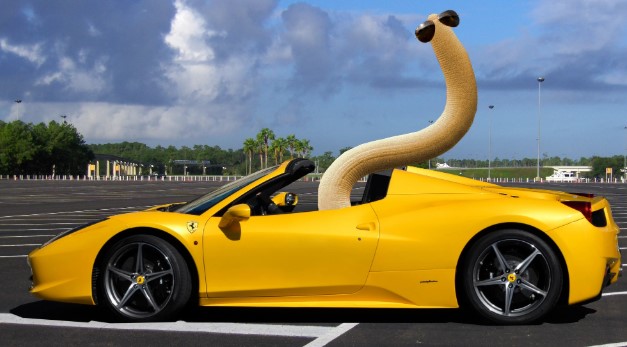
The humble nematode, also known as C. elegans, is the only organism on Earth to have its entire nervous system and brain mapped out like a wiring schematic. We understand this little worm so well, in fact, that scientists are now trying to digitize its peabrain for use in machine learning experiments—in other words, creating worm-inspired AI.
Recreating a worm brain with a series of interconnected computational nodes, referred to as neural networks, is often an exercise in minimalism. Most recently, a team of researchers led by Ramin Hasani at TU Wein in Vienna succeeded in training a network made up of just 12 digital neurons—loosely inspired by the well-understood “tap withdrawal” neural circuit in C. elegans, which controls a physical reflex to touch—to park a tiny RC car outfitted with sensors.
According to a paper describing the work published to the Arxiv preprint server in September, the point wasn’t to see if a worm can drive a car but to create an AI model that is simple for humans to understand. A big problem with neural networks right now is that the more complex they are—sometimes containing millions of nodes and even more connections between them—the less interpretable their decisions are to their human creators. This is less than ideal, especially if AI systems help to make immensely consequential decisions like who gets bail.
“Because these circuits are small, they’re more interpretable because we can quantify the contribution of neurons to the output much better than other systems that are out there,” Hasani told me over the phone. “If you have machine learning models that are closer to the capacity of natural learning systems, then one of the main advantages is going to be more transparency and control.”
An interesting byproduct of AI that’s inspired by biology is being able to compare the two to see how similar they really are. “We tried to look into the circuits after training on a real-life task to try and understand if there is a relation between the actual worm and these circuits that are working on parking the car,” Hasani said. Curiously, both the AI model and the real C. elegans neural circuit contained two neurons that seemed to be acting antagonistically, he said—when one was highly active, the other wasn’t.
Worms, man. Worms and robots.